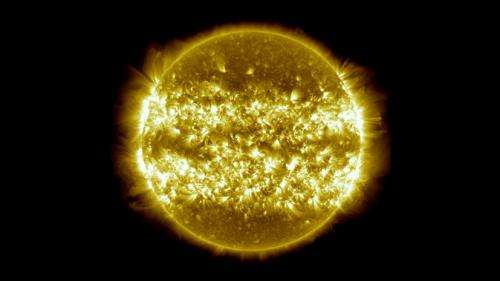Three years of the Sun in three minutes

Since the Solar Dynamics Observatory opened its multi-spectral eyes in space about three years ago, we've posted numerous videos and images from the mission, showing incredible views of our dynamic Sun. Scott Wiessinger from Goddard Space Flight Center's Space Visualization Studio has put together great timelapse compilation of images from the past three years, as well as a one composite still image to "try to encapsulate a timelapse into one static graphic," he told us via email. "I blended 25 stills from over the last year, and it's interesting to see the bright bands of active regions." Scott said he was fascinated by seeing the views of the Sun over a long range of time.
Within the video, (below) there are some great Easter egg hunts – things to see like partial eclipses, flares, comet Lovejoy, and the transit of Venus.
How many can you find?
SDO's Atmospheric Imaging Assembly (AIA) captures a shot of the sun every 12 seconds in 10 different wavelengths, but the images shown here are based on a wavelength of 171 Angstroms, which is in the extreme ultraviolet range. It shows solar material at around 600,000 Kelvin. In this wavelength it is easy to see the Sun's 25-day rotation as well as how solar activity has increased over three years as the Sun's solar cycle has ramped up towards the peak of activity in its 11-year cycle.
You'll also notice that during the course of the video, the Sun subtly increases and decreases in apparent size. This is because the distance between the SDO spacecraft and the Sun varies over time. The image is, however, remarkably consistent and stable despite the fact that SDO orbits the Earth at 6,876 miles per hour and the Earth orbits the sun at 67,062 miles per hour.
See more views, wavelengths and information at this page at the Space Visualization Studio website.
Source: Universe Today





















